I have a confession to make… I’ve become a crazy plant lady. My home is filled with indoor plants including dozens of succulents that I’m growing myself. From gorgeous dripping Donkey’s Tail (also known as Burro’s Tail) in hanging planters to large flower-like Echeveria succulents in indoor pots, I’ve been propagating all types of succulents.
It wasn’t that long ago that I didn’t know how to grow succulents though and when I found out… well, it changed my life.
Now I’m going to show you my two favourite techniques to propagate succulents so you can do it too! All you need to propagate succulents is succulent leaves or cuttings, and some quality indoor soil mix.
Related article: 3 plants you can grow in water: Propagating Swiss cheese plant, devil’s ivy and string of pearls
Related article: 5 most popular indoor plants trending in 2022
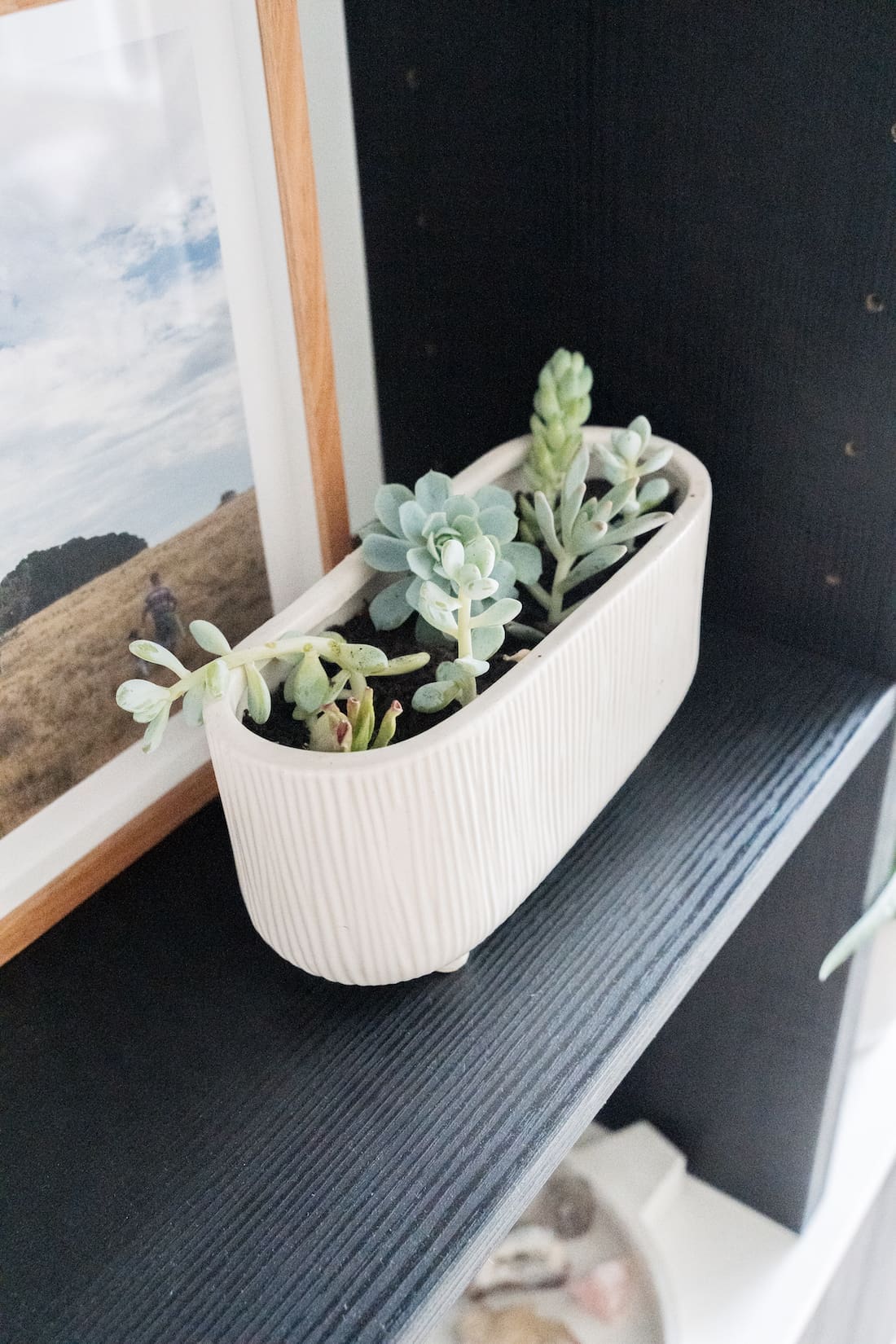
Beginner-friendly succulents
Propagating succulents can be a whole lot of fun, especially as most succulents are super-beginner friendly. Succulents are hardy and durable, often requiring little water and maintenance.
Still, you may want to start with one of these top ten most popular beginner-friendly succulents:
- Agave plants: Often confused with cactus, the main difference is that agave plants have leaves. Grown best in Mediterranean or sandy climates, these plants are excellent for those needing low-maintenance options. The best beginner-friendly agave plants are considered to be the agave murpheyi or agave geminiflora.
- Aloe Vera: The most widely know species of Aloe, aloe vera can be grown both indoors and outdoors. Aloe vera has been used for centuries in herbal medicine practices.
- Burro’s tail: Considered a must-have houseplant, Burro’s tail produces long stems with chunky green leaves. Thrives indoors in a well-drained container.
- Christmas cactus: This beautiful draping succulent is more suited to humid climate conditions, so you’ll have to water it more than other succulent plants.
- Echeveria: With reddish leaves, this plant blooms especially well in bright sunlight. Leaves most often come in green, but rarer variants have blue or grey shaded leaves.
- Jade plant: Known as the lucky plant or friendship tree, this succulent is most often grown indoors and is valued for having good Feng Shui.
- Panda plant: Native to Madagascar, this plant blooms best in bright, indirect light. Yet, it can acclimatise to low light areas, making it suitable for you’re entire home.
- Ponytail palm: While this plant isn’t actually a palm tree, it sure does look like it with their woody-trunk and heavy head of leaves. These are a very slow-growing succulent, but can reach quite tall outdoors. Keep this succulent indoors and in a put if you want to keep it small.
- Snake plant: Known by many other names including mother-in-law’s tongue, this spear-like tropical is a great indoor air purifier. The shape of this plant also makes for an excellent outdoor statement piece.
- String of pearls: A creeping succulent who can grow long stems, you’ll often see this succulent in hanging baskets or on shelves. This plant is incredibly popular on social media thanks to their little green beads.
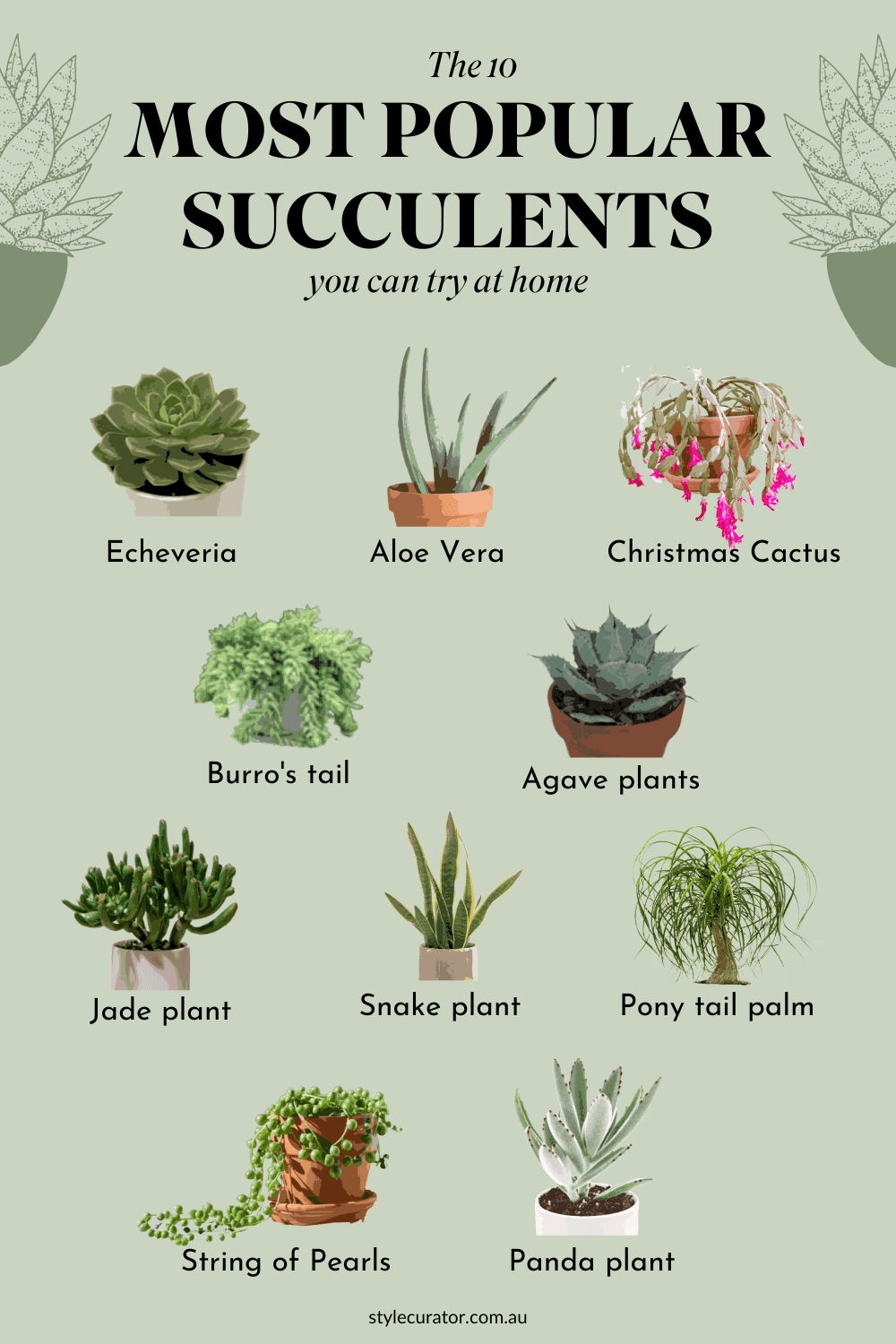
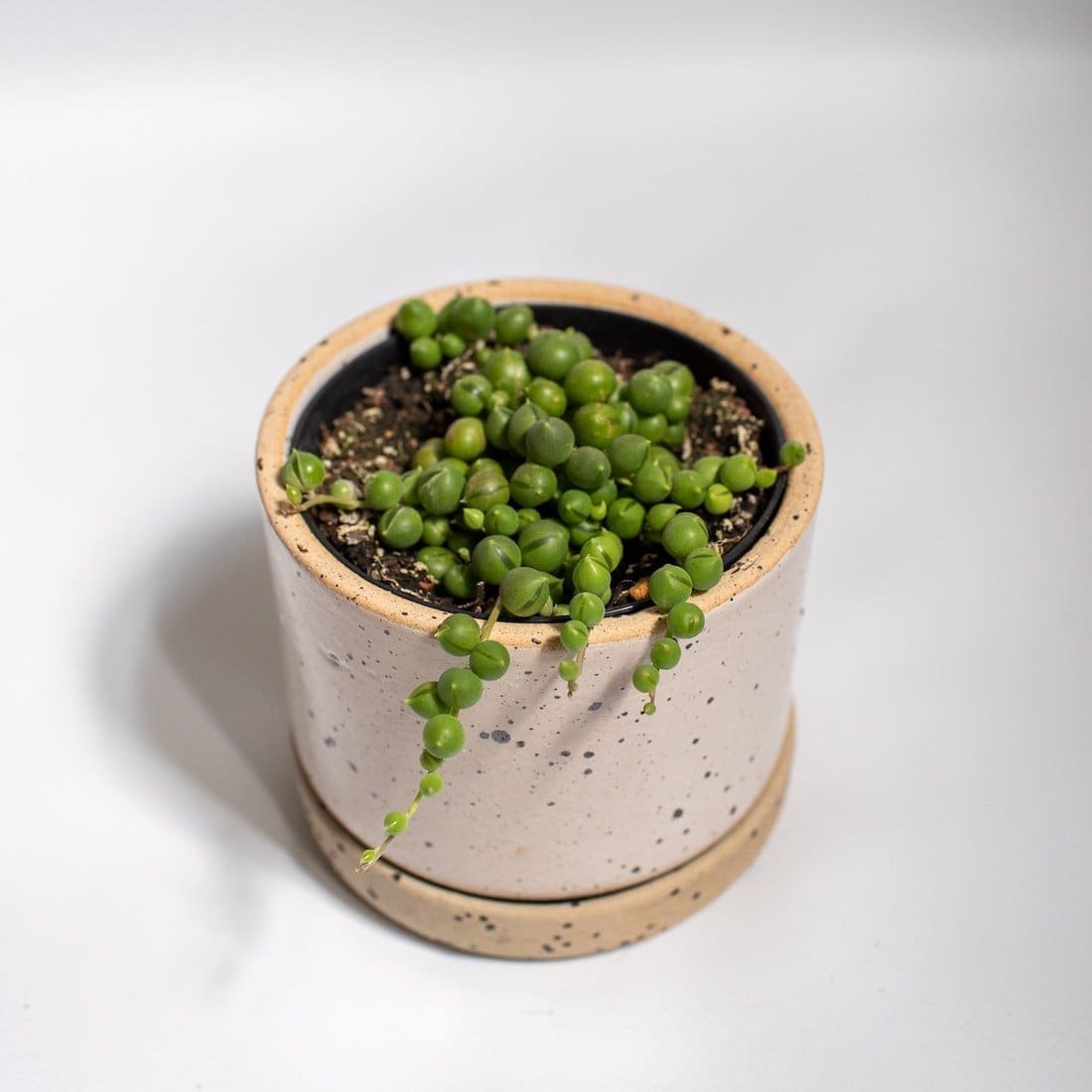
How to grow succulents from leaves
This technique is super simple and allows you to grow loads succulents at once. However, it does take a tad longer for them to grow than from cuttings.
Simply pick individual leaves from an established succulent and place these into dirt. I only place the tip of the leaf into soil and water about once a week.
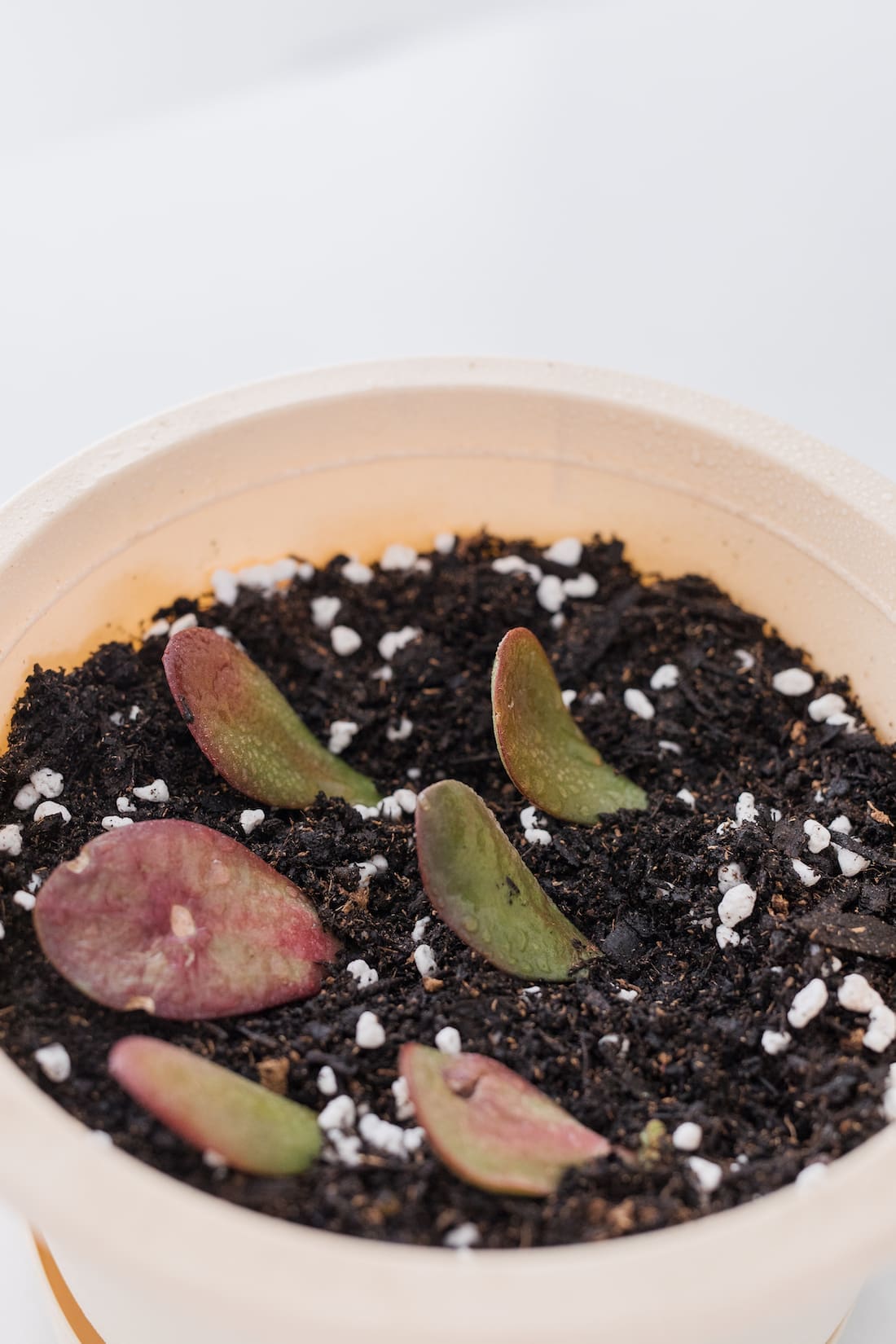
You’ll see within a few weeks, tiny growth starts on the end of the leaf. Give it a few more weeks and a small succulent plant should be established.
Keep the leaf in the dirt and allow the new succulent to grow. Eventually the large original leaf will die and shrivel away and you’ll be left with a beautiful new succulent plant.
Tips for propagating succulents from leaves:
- It’s important to take care when collecting the leaves, ensuring you get the full leaf and not just a section of it. The growth of the new succulent happens at the very tip of the leaf.
- Leave the leaf to dry out for a day or two and scab over the cut area, otherwise there is a chance the leaf will drown the first time you water it.
- It’s normal for many of these leaves not to establish into new plants so be sure to plant lots of leaves to increase your chances.
- Keep the planted leaves in an area that gets a few hours of direct sunlight a day (but not all day) and only water once a week.
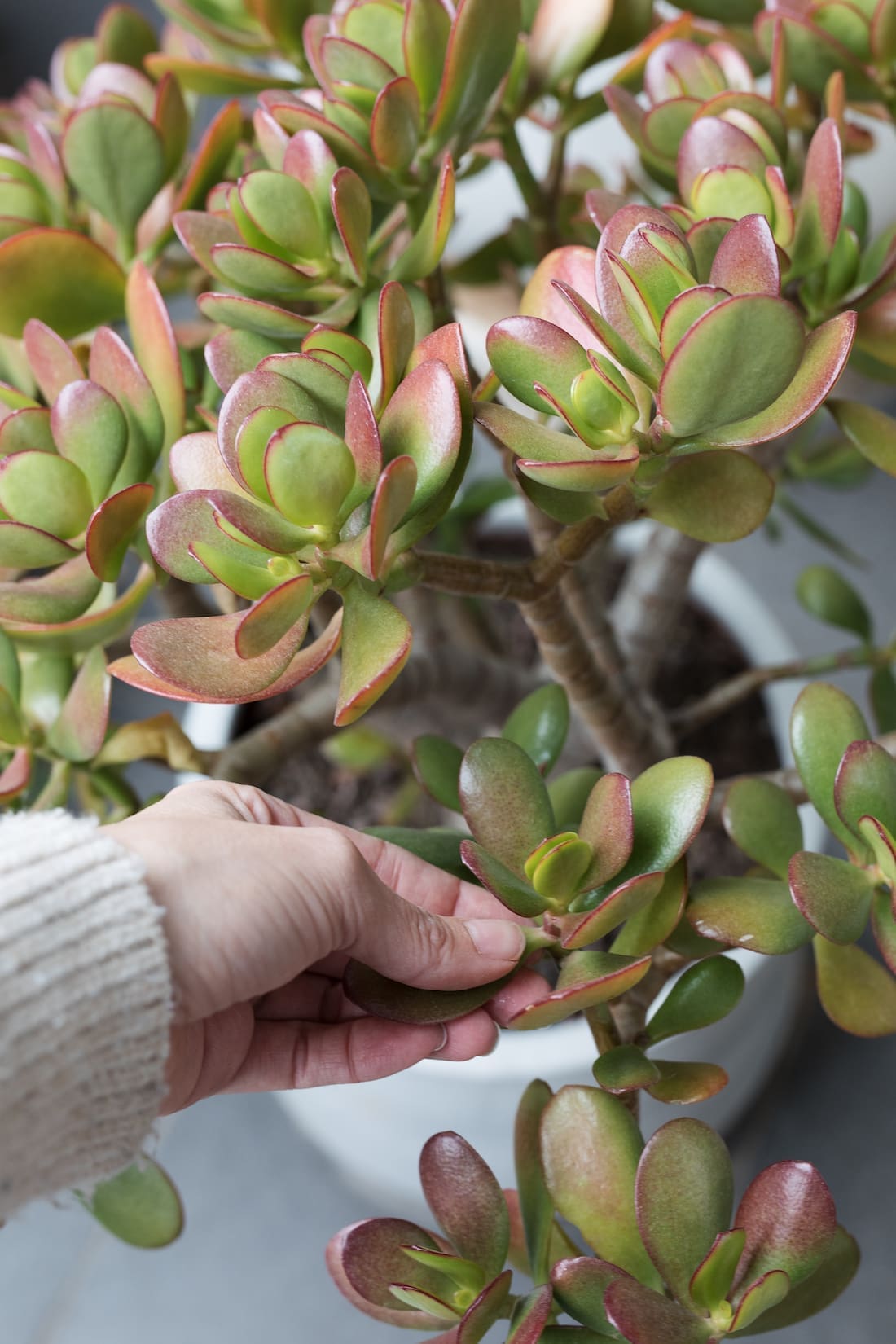
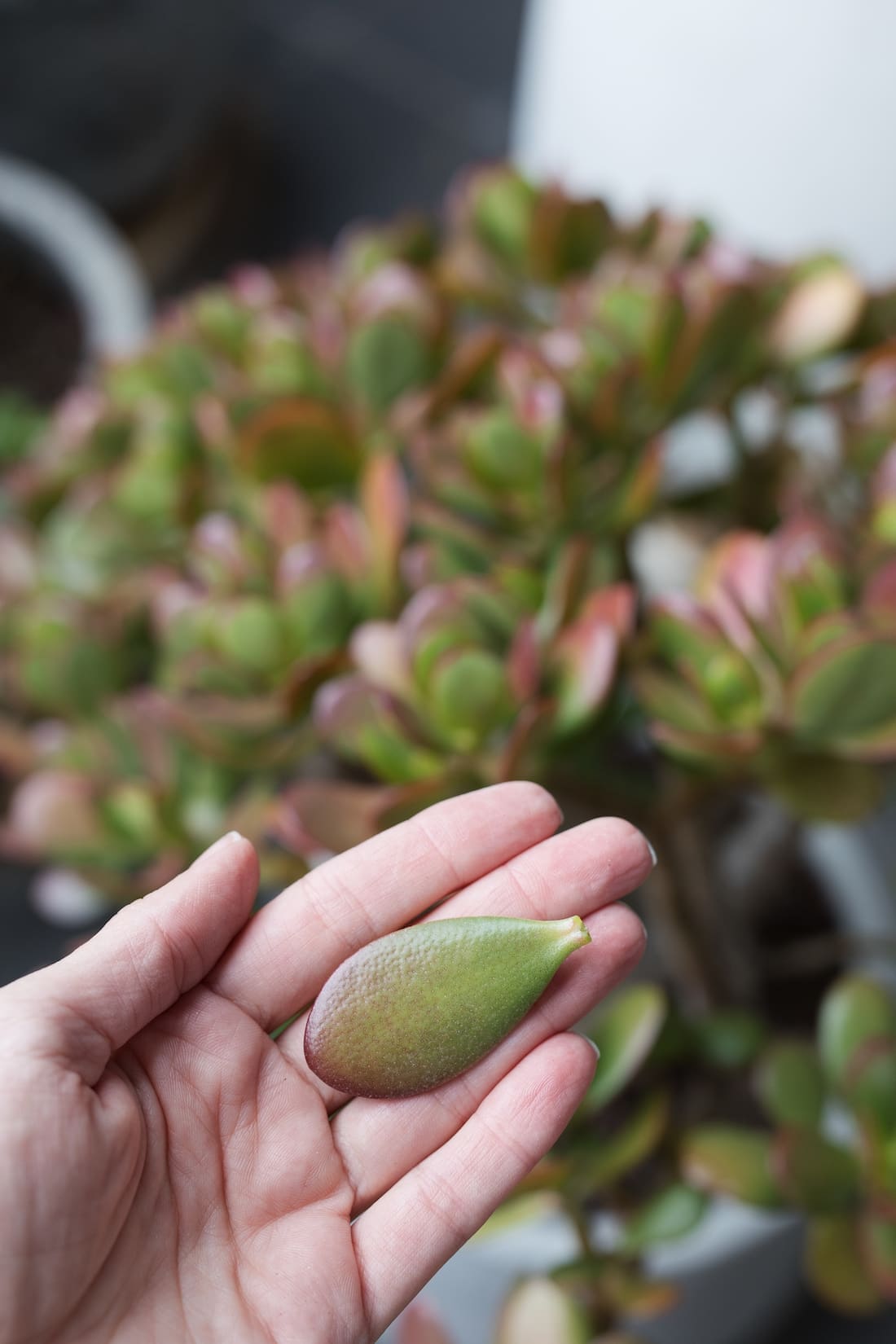
How to grow succulents from cuttings
A quicker way to growing succulents is by breaking away a small offshoot like the one pictured below and planting this directly into soil. Or, if the succulent is more ‘tree-like’ such as the Coral succulent, you could break away a small branch and place this directly into soil.
Leave the cutting in soil and water sparingly. Within a few weeks, it will establish roots and continue to grow.
I’ve successfully used this technique to grow String of Pearls, Coral succulent, Jade plant and Echeverias, just to name a few.
Tips for propagating succulents from cuttings:
- Sometimes I will add a drop of honey to the tip of the stem before I plant it into soil to encourage root growth. You can also buy a root growth powder if you prefer.
- Ensure the pot has good drainage and do not overwater or you will drown the plant. Only water once a week or when soil feels dry and light.
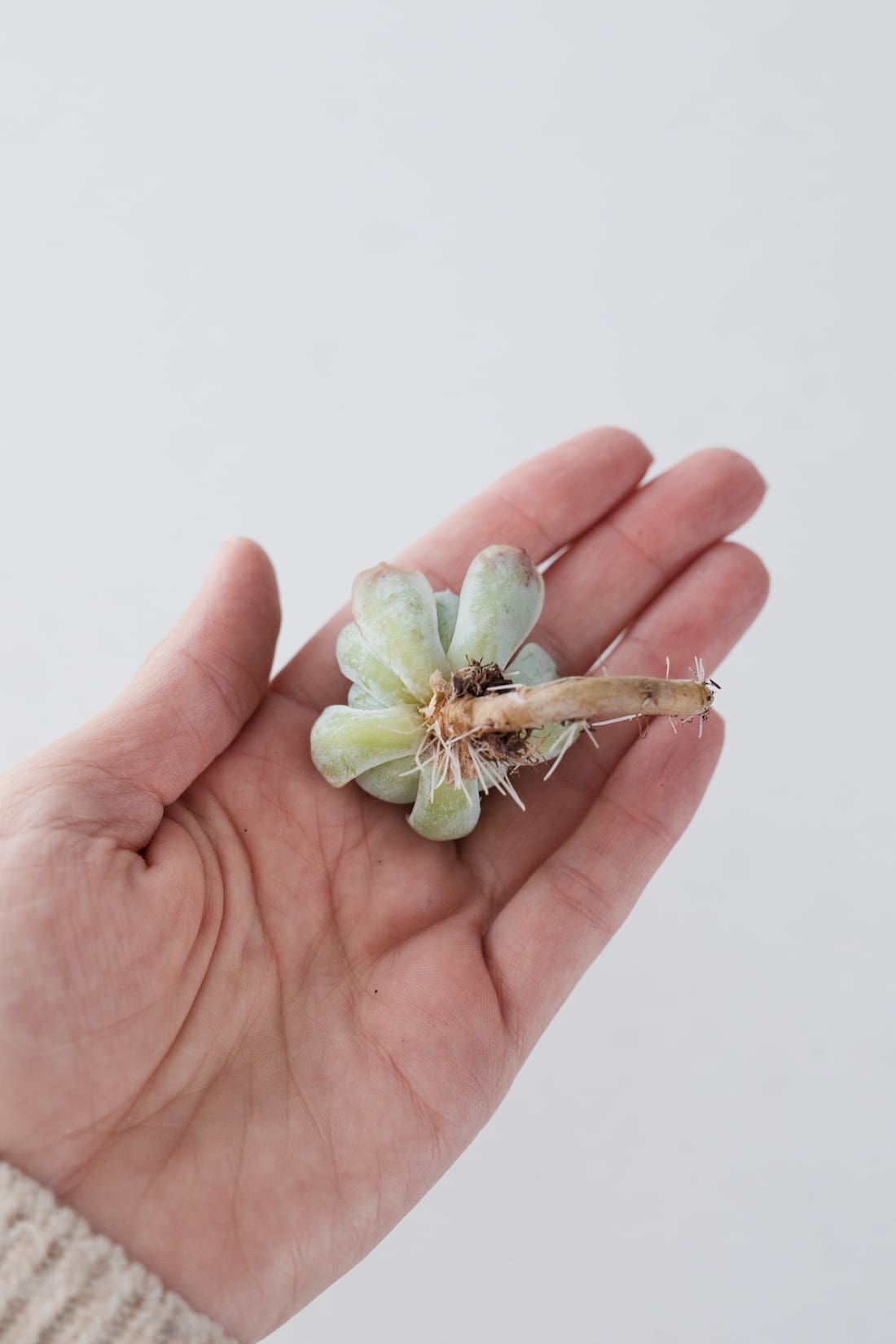
Top 3 things to consider to protect your propagated succulents
From poor drainage to too much sunlight, there are a variety of reasons you could be killing your plants. We recommend checking out our blog post with the top 12 reasons you’re killing your indoor plants here.
In the meantime, here are the top three things things you need to consider to help keep your newly propagated succulents alive.
1. Lighting
If you’re noticing your succulents are growing longer and more stretched out, it may be a sign that the succulents aren’t getting enough sun.
Generally, succulents need about 6-7 hours of indirect sunlight each day. If not, they’ll start growing out towards the sunlight instead.
This works well for succulents that are meant to grow out nice and tall. However, if you’re succulent is meant to be more compact and clustered, it’s time to move the succulent to a more sunny spot.
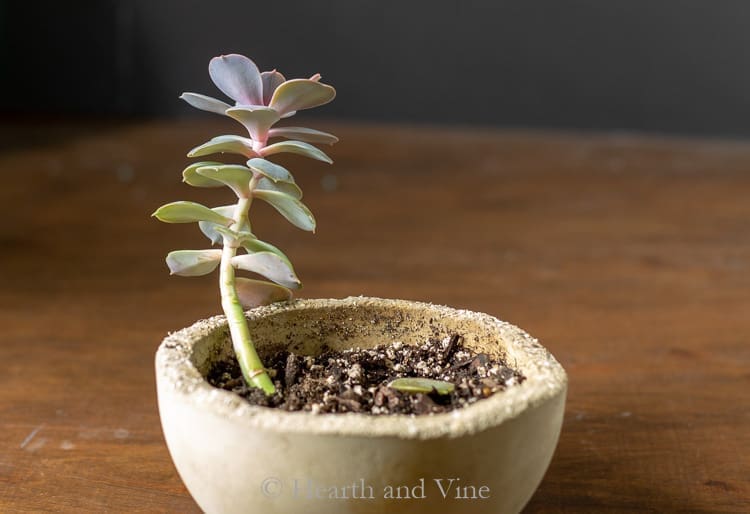
2. Overwatering
Too much watering can do more damage than good. In fact, it can often rot both the original leaf/cutting and new growth.
You should only water your succulents if the soil is dry to the touch. And even then, it will be relatively minimal. You could just use a spray bottle of water to spritz the succulent to prevent overwatering.
Tip: It’s better to water in the morning!
3. Rotate your plants
Building off the concerns around lighting, you want to ensure you’re rotating your plant so every side gets sun. This will also help the plant grow upright, all while ensuring each side of the plant receives equal sunlight.

And there you have it! Our beginner’s guide that shows you how to grow succulents at home! Do you have other tips on how to care for succulents? Do you recommend other succulents for beginners? We’d love to hear your thoughts in the comments below.
Find more plant care guides here
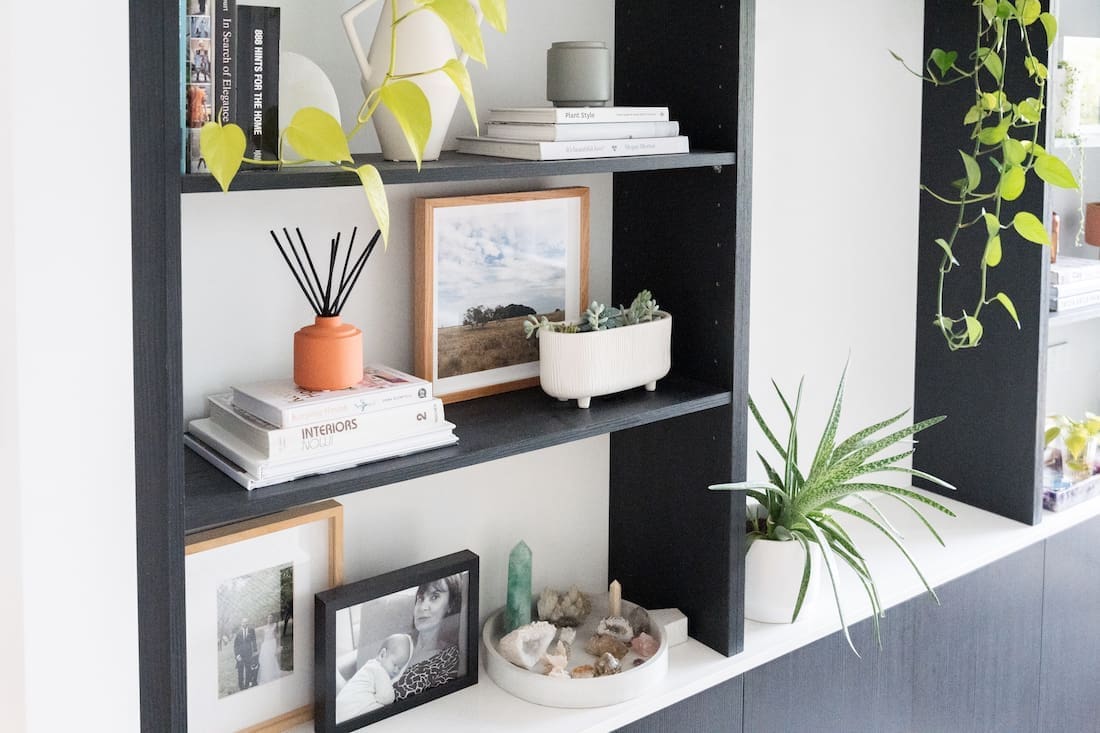
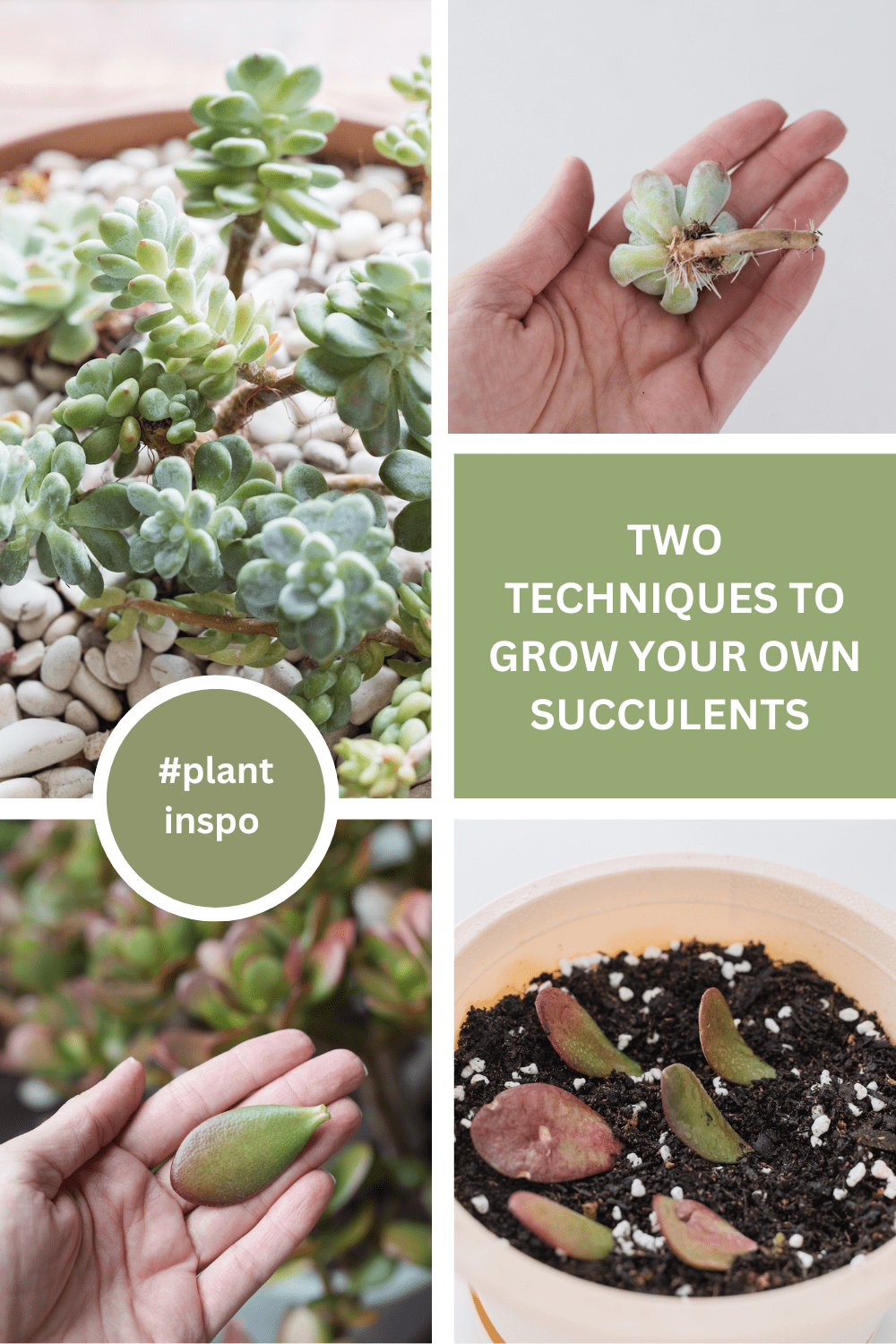
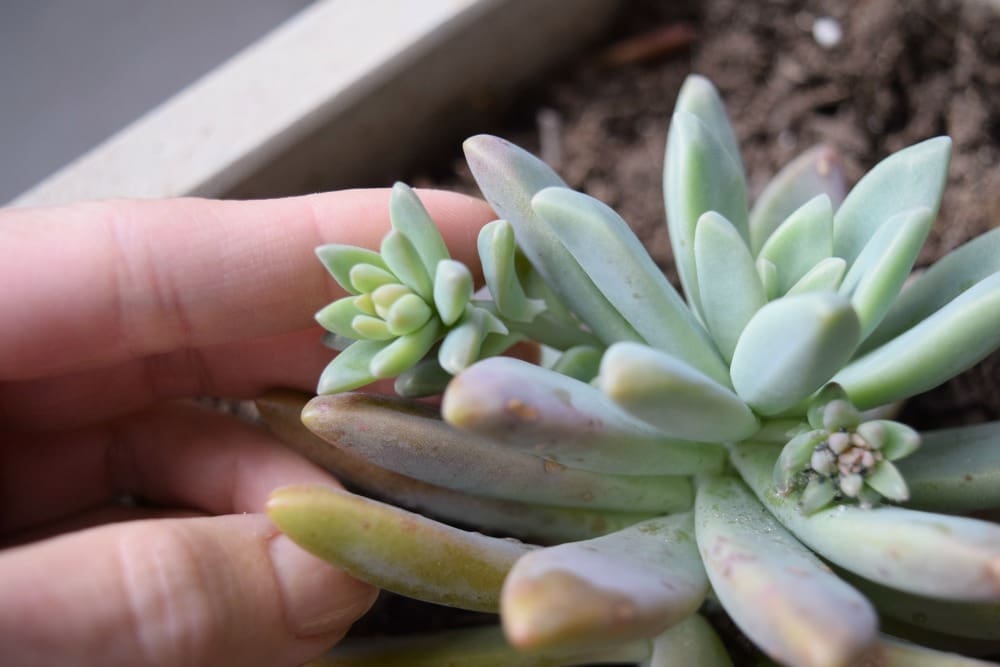
This article was first published in July 2017 and continues to be updated with latest information and images.







Wow, never knew you could grow succulents from leaves. This is a cool idea I’m going to try 🙂
He he, it’s a cool trick isn’t it?! Happy propagating 🙂
I love this post! I’m currently in the process of growing succulents from leaves and this morning I saw a small growth on one leaf. I cannot describe how happy I was… I hope a few others will grow succulents too cause I have a big bunch of leaves in the soil right now. 🙂
Thanks lovelies! I can’t believe it’s taken me this long to write this post (I’ve been meaning to write it for over a year!) but I’m on a mission to share loads of plant inspo over the coming weeks because it’s my current obsession and I know I’m not alone 🙂
How rewarding is it to see your plants grow?! I love it! What type of succulents are you growing?
For now just Echeveria – a little pink/purple one. I love this one. 🙂
Can’t wait for more plant related posts! 😉
Oh beautiful, I love those ones and have quite a few in my home too xx